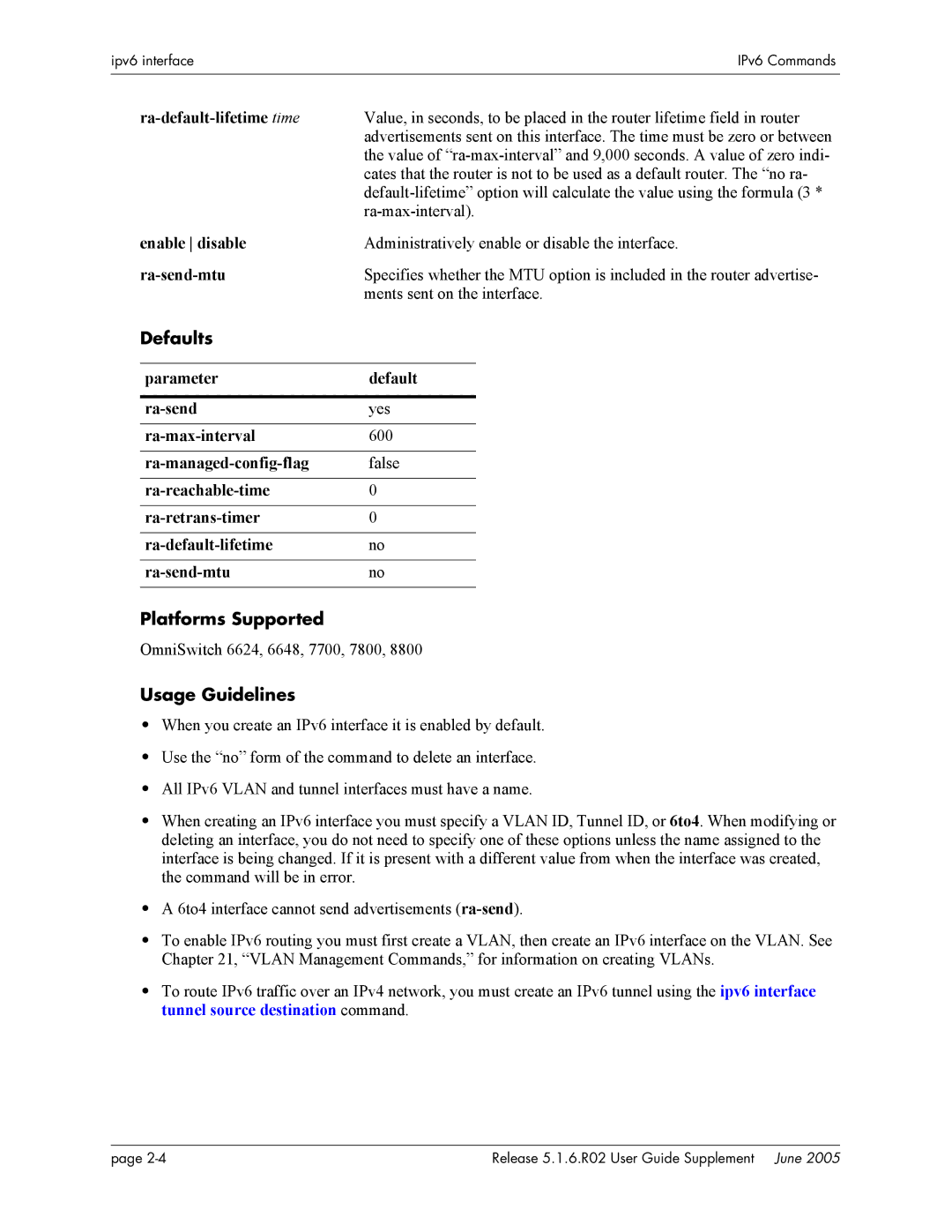
ipv6 interfaceIPv6 Commands
| Value, in seconds, to be placed in the router lifetime field in router | |
| advertisements sent on this interface. The time must be zero or between | |
| the value of | |
| cates that the router is not to be used as a default router. The “no ra- | |
| ||
| ||
enable disable | Administratively enable or disable the interface. | |
| Specifies whether the MTU option is included in the router advertise- | |
| ments sent on the interface. | |
Defaults |
|
|
|
|
|
parameter | default | |
|
| |
yes |
| |
|
|
|
600 |
| |
|
|
|
| false | |
|
|
|
0 |
| |
|
|
|
0 |
| |
|
|
|
no | ||
|
|
|
no | ||
|
|
|
Platforms Supported
OmniSwitch 6624, 6648, 7700, 7800, 8800
Usage Guidelines
•When you create an IPv6 interface it is enabled by default.
•Use the “no” form of the command to delete an interface.
•All IPv6 VLAN and tunnel interfaces must have a name.
•When creating an IPv6 interface you must specify a VLAN ID, Tunnel ID, or 6to4. When modifying or deleting an interface, you do not need to specify one of these options unless the name assigned to the interface is being changed. If it is present with a different value from when the interface was created, the command will be in error.
•A 6to4 interface cannot send advertisements
•To enable IPv6 routing you must first create a VLAN, then create an IPv6 interface on the VLAN. See Chapter 21, “VLAN Management Commands,” for information on creating VLANs.
•To route IPv6 traffic over an IPv4 network, you must create an IPv6 tunnel using the ipv6 interface tunnel source destination command.
page | Release 5.1.6.R02 User Guide Supplement June 2005 |
